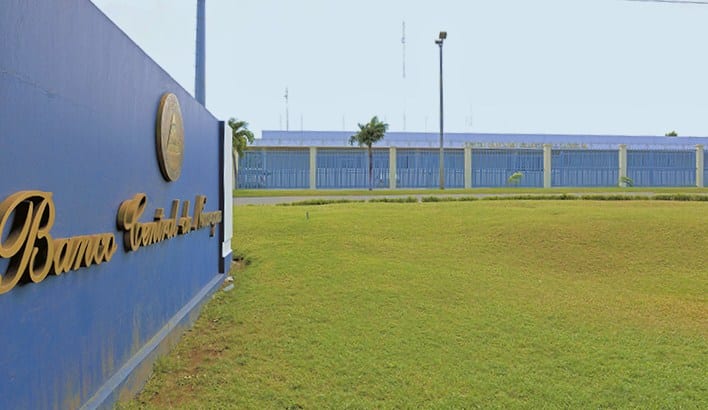Nicaragua’s Central Bank Reserves Dropped 41% in April to December
This situation threatens the stability of the Nicaraguan currency, the Córdoba, since the reserves are also used to balance the supply and demand.
By Julian Navarrete (La Prensa)

HAVANA TIMES – The reserves that Nicaragua’s Central Bank utilizes to buy and sell foreign exchange and to meet other financial obligations like the debt payment fell 41% between April and December of 2018, during the months of crisis.
This situation threatens the stability of the Córdoba since the reserves are also used to balance the supply and demand of the currency.
According to the Central Bank, adjusted Net International Reserves (NIR) fell by 792.9 million dollars in the last eight months of last year, compared to the bank’s balance in April when the crisis erupted.
The Central Bank utilizes the NIR to meet foreign-exchange demands from other economic agents and the central government, as well as for other payments.
Because of this drop, at the end of 2018, Gross International Reserves (GIR) had decreased by 709.1 million dollars compared to April when the crisis began, and by 497 million dollars compared with December of 2017.
The GIR includes the adjusted NIR, but does not include funds within the reserves that cannot be touched such as the Fund to Guarantee Deposits (FOGADE) and the reserve requirement on deposits in foreign currency.
The Collapse of the Adjusted NIR
By the end of the fourth month of 2018, the Central Bank had 1.938 billion dollars in its net adjusted reserve account, the highest level in at least the last 14 years.
However, as of December 31, there was 1.145 billion dollars in this same account, the lowest amount since 2011.
Compared with December of 2017, the adjusted NIR fell by 656.7 million dollars, or a reduction of almost 37%. That year the country closed out with 1.802 billion dollars.
According to economists consulted, the adjusted NIR is so important that the International Monetary Fund (IMF) monitors the evolution of the NIR in countries even more closely than their Gross International Reserves (GIR).
One economist explained to LA PRENSA that the drop in these reserves could also be due to the fact that during these months the Executive branch used loans earmarked for projects within these reserves, as well as payments corresponding to the amortization of the external debt of both the government and Central Bank.

“When the reserves (NIR) are running out too rapidly, the government can take the extreme measure of devaluing the currency or imposing an exchange-rate regime,” explained an economist who wished to remain anonymous.
The Ortega-Murillo regime has also withdrawn money from the reserves to transfer into the Nicaraguan social security system, which is now running one of the worst deficits in the last six years of crisis.
Since 2015 and up until July of this year, the adjusted NIR have remained above 1.4 billion dollars.
Gross Reserves Drop

All of these measures have weakened Gross International Reserves (GIR) despite the fact that the Nicaraguan Central Bank used an emergency fund of 200 million dollars from the Central American Bank for Economic Integration (CABEI) to stabilize the NIR. The GIR still registered a serious reduction of 709.1 million dollars between April when the crisis began, up until December.
This means that the GIR has decreased by 23.87 percent, or from 2.970 billion dollars to 2.261 billion dollars during the period of reference.
Reserves reflect a country’s payment capacity. This is why it is important to maintain the stability of reserves within margins required by international organisms, in order to have access to external financing.
Flight of deposits
The Nicaraguan Central Bank has had to inject funds from the NIR into the national financial system to address the massive outflow of money, caused by the crisis.
Between March and December of 2018, 1.553 billion dollars in deposits were withdrawn, according to the latest data from the Superintendency of Banks and Other Financial Institutions.
Since March of 2018, total deposits in the financial system dropped by 28.26 percent.
According to government figures, of the 1.553 billion dollars withdrawn from the bank, 702 million dollars were in savings, 435 million in passbooks and 415 million in term savings.
This means that for every 100 dollars in public deposits that the bank manages, 30 dollars have been withdrawn, an unprecedented phenomenon in the last 40 years.
